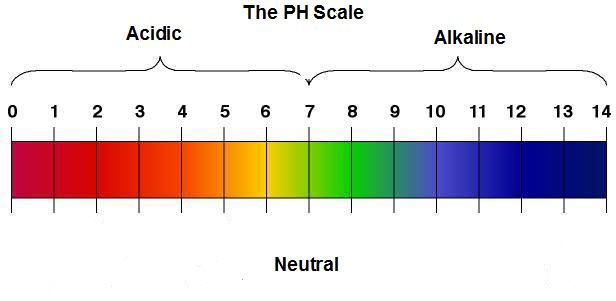Hydration in Sport – Part 3

Hydration in Sport – Part 3
In this part of our journey on hydration we’ll try to understand what hydration is and how to have a global view over it.
Minerals in Sport and Dehydration
In the last 15 years I’ve been lucky enough to train a number of people in different environments.
From gyms to ski slopes, from football fields to boxing rings and road bikes, a good percentage of athletes have come to me fully equipped with their training gear and with the classic bottle filled with blue or orange liquid.
Let’s go through some facts:
Sweat is a mixture of water and minerals; common knowledge. What’s interesting to note though is the proportion.
1 litre of sweat (one full litre!) contains an average of 1.5 grams of minerals.
Of these minerals, 40% is represented by sodium, followed by chlorum. Calcium, potassium and magnesium are also present, but in minor quantities.
In today’s diet, sodium is one of the most common minerals, as it can be found in products from processed meat to dairy products and fruit.
As a matter of fact, studies have been conducted on endurance athletes to verify the need at all of a mineral supplements during workouts.
Results were clear that the athletes who didn’t receive mineral supplements didn’t have an deficiency in the hematic stream (bloodstream). Their diet was rich enough in minerals, to not justify the intake of supplements.
Generally speaking, drinking a full glass of fresh orange juice is enough to restore the balance of calcium, magnesium and potassium lost in 3 hours of training.
On the other hand, an athlete competing in endurance sports can lose up to 3 litres of water in 1 hour, a high level marathon athlete can reach 5 litres in a competition.
It’s clear then that plain water is what you need during training, not the fluro liquid.
Minerals in Life
Minerals do have great importance in our body and for a great number of vital functions:
Oxygen transportation to the cells, muscular contractions, and the health of the central nervous system.
They are some of the main constituents of bones and teeth and in lower percentages are also present in body fluids and in all cells.
Here below a quick review of their functions:
Calcium:
The most abundant mineral in the body (40% of the total). Important for the formation of bones and teeth, as well as for the neural impulses, the muscular contraction and blood coagulation.
Recommended daily dosage: 800 to 1,200 mg.
Phosphorus:
Mixed with calcium it creates bones and teeth. An essential part of the molecules that create energy (ATP).
Iron:
A component of haemoglobin, the protein responsible for carrying oxygen to all tissue.
Magnesium:
Involved in muscular activity, and an activator of a number of enzymes and in protein absorption.
Potassium:
Helps to facilitate muscular contractions, the lack of this mineral would cause cramps. It also regulates water balance and the acid-alkaline balance.
Sodium and Chlorum:
Regulates the body’s water balance as well as the PH balance.
Generally speaking , a diet that is well balanced will provide the required quantities of minerals for your activities. What a balance diet actually is… is yet to be discussed.
Minerals and Diet
This could easily be one of those neverending chapters, but let’s try to make it brief!
Minerals can be found in all sorts of foods, from dairy products to meat, from fruit to veg and of course, water.
Generally speaking it’s fairly “easy” to get enough minerals in your diet, especially because nowadays we are all well-fed and those involved in sport are unlikely to be suffering from malnutrition.
The point then is not about the quantity, rather it is about the origin, the quality and the balance of what we eat.
But, the balance of what?
Let’s take a step back.
Our body is finely honed machine that regulates itself everytime an imbalance occurs.
It will always try to go back to the original, natural state.
Every time damage is reported, your body will try to repair it, in order to bring it back the natural state; bones will be repaired, cuts will be healed, hair will be regrown (not in all of us unfortunately!)
 Human blood’s PH is between 7.35 and 7.45, therefore towards the alkaline end of the scale.
Human blood’s PH is between 7.35 and 7.45, therefore towards the alkaline end of the scale.
As an example, the PH of the healthy amniotic liquid where our life commences, is also alkaline (PH 8).
Our blood is the method of transport of everything we ingest. Every time we eat something with a lower (and therefore more acidic) PH, the blood must also cope with it.
As much as the body did for the repair of the cut on the skin, it also will activate a series of actions to bring back the natural state.
Through the kidneys, breathing and sweating, it will try to get rid of the excess acid.
When those systems are not enough it will engage a series of processes to drop the level of the PH.
These processes really are fascinating but for the time being, it’s enough to say that alkaline minerals are the elements used to bring back the PH to it’s natural range.
Calcium is one of the most commonly used minerals in our bodies as it helps expelling acids through the kidneys or sweat.
Some foods have a strongly acidic effect on our body, some don’t. Eating too much food that prompts an acidic state means having the PH balance system always on alert; a great proportion of calcium (and water) will be required to neutralize the inflammation caused by this excess acid.
Luckily our bodies have good deposits for these precious minerals: bones and muscles.
These are the tissues that will take the hit, as they will be where the body draws the mineral deposits from in order to maintain its healthy PH.
The consequences of a constant extraction from the muscles and the bones is obvious and clearly the performance (and health) of our athlete will be at risk.
We can then deduce that sweating is in fact only a minor cause of the mineral imbalance, which is in the most part due to poor diet.
PRAL Index
Here you can see the effect of some food on the PH of the kidneys (PRAL index). It’s not the PH of the food itself that matters, but its effect on the human body.
Being able to balance the intake of food between the need of macronutrients and the PH effect is of primary importance. Alongside this, we can consider mineral supplementation for a period of time in order to restore possible deposit loss.
Before buying supplements make sure to ask a professional opinion!
Click here for Part 2
Click here for Part 1
The Subzero Coaching Team
Note to the reader.
None of the above substitutes the opinion of your doctor.
Do not use the information provided on this site for diagnosing or treating a health problem or disease. It is not a substitute for professional care.
Seminars on this and many more topics are delivered in all our ski instructor courses.
Check out our Autumn and Winter Gap Courses, ISIA Level 3 Course, Level 4 Course, Race Training as well as the Full Focus, our one to one coaching course.
Looking for summer training? Check out our Summer Ski Instructor Training schedule!

Hydration in Sport – Subzero Coaching